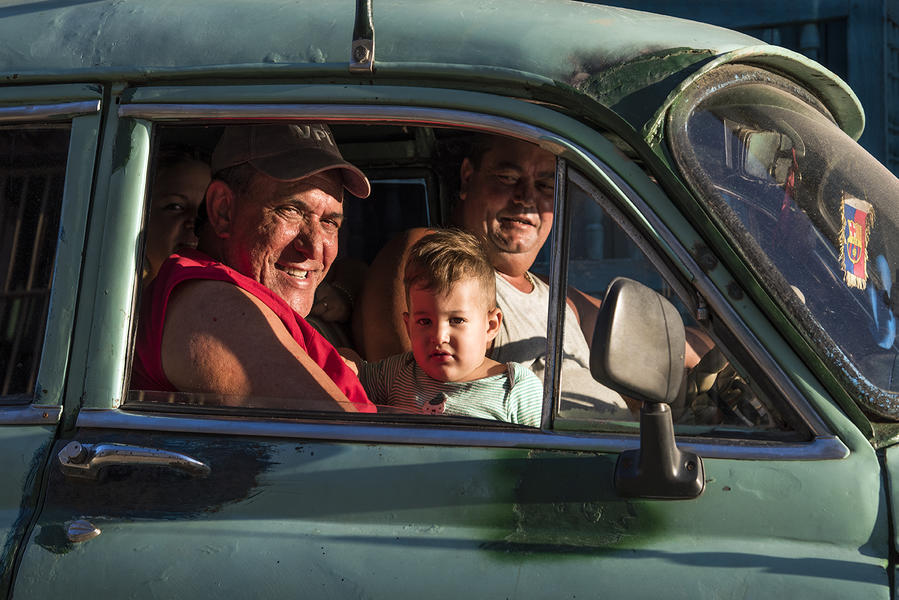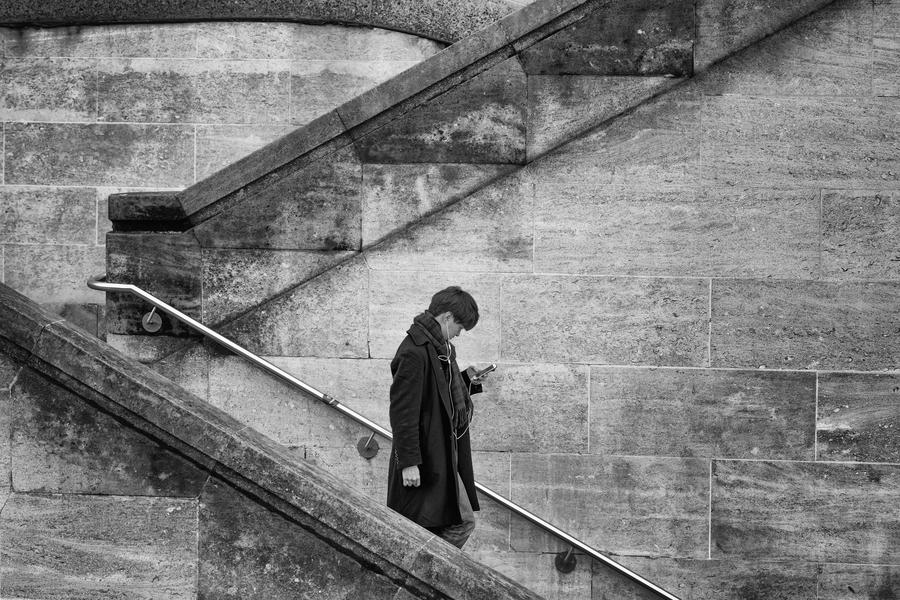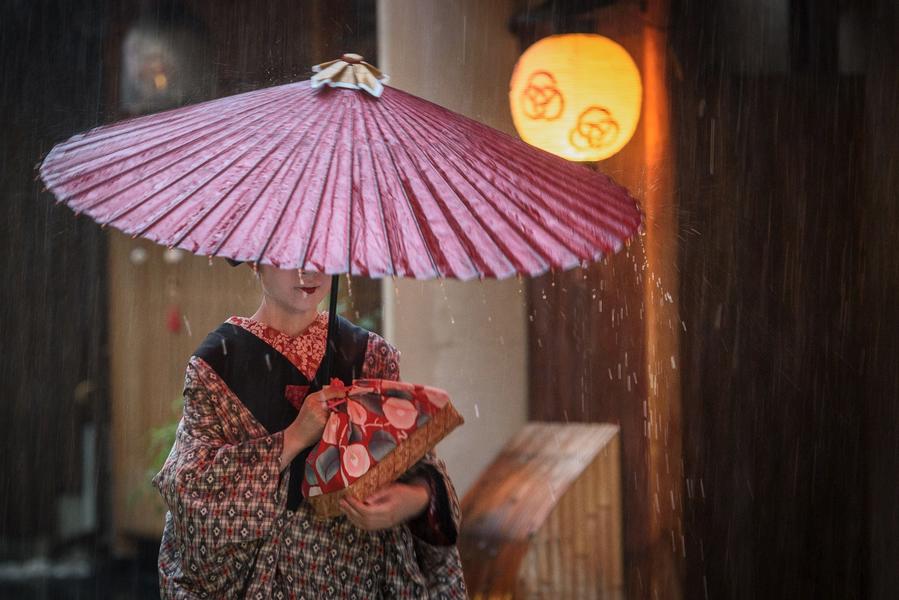Choosing the best lens for street photography is no easy task. Thankfully, three top photographers are here to offer some advice.
Nikkor 24-120mm f/4 ED VR
‘Family Road Trip’, Nikon D750, 24-120mm, 1/400sec at f/8, ISO 400
Chosen by Linda Wride
As it happens, I don’t have a lot of camera gear. As well as my iPhone, which I use a lot, I have one DSLR body (a Nikon D750) and one lens, a Nikkor wideangle zoom 24-120mm. This is mainly due to a back problem, which means I can’t carry a heavy bag of kit around when I’m out on a shoot.
The Nikkor is a good quality, very versatile lens, which serves me well whether I’m taking architectural shots, making abstract images, or producing travel or street photography. People often assume I’m taking a photo of the building behind them, when in fact I’ve zoomed in and focused on them. I don’t feel entirely comfortable taking photos of complete strangers, especially when there are children around, which can make some people very upset. Being able to shoot street photography in an anonymous way with a wideangle zoom helps me get candid shots, regardless of whether I’m focusing on the subject or the wider context.
Leica Summilux 50mm f/1.4 ASPH
‘Plugged In’, exposure unknown
Chosen by Ed Fil
If I had to choose my best lens for street photography, a quick glance at my Photocrowd feed shows that the versatile Leica Summilux 50mm f1.4 ASPH easily stands with its head held high above the rest. It has never let me down and has been a constant companion on my travels throughout the last few years.
Originally, this lens was bought to compliment my excellent 50mm Summicron lens. However, it has gradually edged the latter out and even dominated the other equally decent offerings from the likes of the 35mm and 28mm street photography alternatives.
The advantages of having a 50mm glued to your full-frame camera are well documented and widely known by the photographic community. My personal take on the use of this lens is this:
• you get more of your subject in the frame
• your subject sits truly central within the composition
• you can easily leave out any distracting and unnecessary elements
• it forces you to take a step or two closer to your subject
• you get to know your equipment and focal length until shooting with it becomes second nature.
Nikkor 70-200mm f/2.8
‘Under the Rain, Nikon D810, 70-200mm, 1/80sec at f/2.8, ISO 1600
Chosen by Patosan
My principal subject has always been people. Whenever I travel, I spend a lot of time on the streets, inside markets, around temples and religious sites, trying to capture people, their look, their way of life, their culture and habits.
For a long time, my go-to lens for this was a prime 35 mm f/2. It allowed a proximity and a contact with the subject that was perfect for me. Then, I switched to a zoom, the Nikkor 24-70mm f/2.8. It allows for the same contact with the subject but added a certain comfort for the composition by allowing to change the focal length.
Nowadays, due to my subjects (geisha walking down the street) and my style, I have switched to the AF-S Nikkor 70-200 mm f2.8E, and I love it. The quality and the sharpness of this lens is amazing. The speed and precision of the autofocus is one of the best currently available, and more than anything else, I love the way this optic allows me to separate my subject from the background with a delicious and pleasant bokeh. I usually use the lens at full aperture to allow for this and get the fastest possible shutter speed without boosting the ISO.



